
The Lyndon B. Johnson Space Center (JSC) is NASA's center for human spaceflight, where human spaceflight training, research, and flight control are conducted. It was renamed in honor of the late US president and Texas native, Lyndon B. Johnson, by an act of the United States Senate on February 19, 1973.
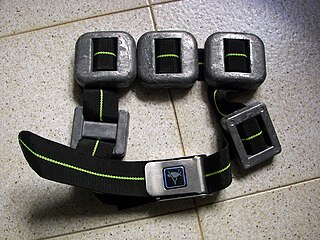
A diving weighting system is ballast weight added to a diver or diving equipment to counteract excess buoyancy. They may be used by divers or on equipment such as diving bells, submersibles or camera housings.

Michael Landon Gernhardt is a NASA astronaut and manager of the Environmental Physiology Laboratory, and principal investigator of the Prebreathe Reduction Program (PRP) at the Lyndon B. Johnson Space Center.

Artificial gravity is the creation of an inertial force that mimics the effects of a gravitational force, usually by rotation. Artificial gravity, or rotational gravity, is thus the appearance of a centrifugal force in a rotating frame of reference, as opposed to the force experienced in linear acceleration, which by the equivalence principle is indistinguishable from gravity. In a more general sense, "artificial gravity" may also refer to the effect of linear acceleration, e.g. by means of a rocket engine.

Scuba diving is a mode of underwater diving whereby divers use breathing equipment that is completely independent of a surface air supply. The name "scuba", an acronym for "Self-Contained Underwater Breathing Apparatus", was coined by Christian J. Lambertsen in a patent submitted in 1952. Scuba divers carry their own source of breathing gas, usually compressed air, affording them greater independence and movement than surface-supplied divers, and more time underwater than free divers. Although the use of compressed air is common, a gas blend with a higher oxygen content, known as enriched air or nitrox, has become popular due to the reduced nitrogen intake during long and/or repetitive dives. Also, breathing gas diluted with helium may be used to reduce the likelihood and effects of nitrogen narcosis during deeper dives.
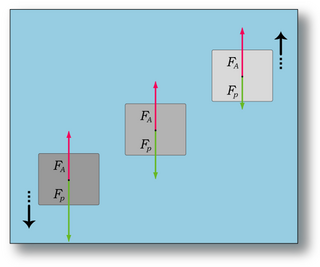
Neutral buoyancy occurs when an object's average density is equal to the density of the fluid in which it is immersed, resulting in the buoyant force balancing the force of gravity that would otherwise cause the object to sink or rise. An object that has neutral buoyancy will neither sink nor rise.

The Space Systems Laboratory (SSL) is part of the Aerospace Engineering Department and A. James Clark School of Engineering at the University of Maryland in College Park, Maryland. The Space Systems Laboratory is centered on the Neutral Buoyancy Research Facility, a 50-foot-diameter (15 m), 25-foot-deep (7.6 m) neutral buoyancy pool used to simulate the microgravity environment of space. The only such facility housed at a university, Maryland's neutral buoyancy tank is used for undergraduate and graduate research at the Space Systems Lab. Research in Space Systems emphasizes space robotics, human factors, applications of artificial intelligence and the underlying fundamentals of space simulation. There are currently five robots being tested, including Ranger, a four-armed satellite repair robot, and SCAMP, a six-degree of freedom free-flying underwater camera platform. Ranger was funded by NASA starting in 1992, and was to be a technological demonstration of orbital satellite servicing. NASA was never able to manifest it for launch and the program was defunded circa 2006. For example, Ranger development work at the SSL continues, albeit at a slower pace; Ranger was used to demonstrate robotic servicing techniques for NASA's proposed robotic Hubble Servicing Mission.

The Neutral Buoyancy Laboratory (NBL) is an astronaut training facility and neutral buoyancy pool operated by NASA and located at the Sonny Carter Training Facility, near the Johnson Space Center in Houston, Texas. The NBL's main feature is a large indoor pool of water, in which astronauts may perform simulated EVA tasks in preparation for upcoming missions. Trainees wear suits designed to provide neutral buoyancy to simulate the microgravity that astronauts would experience during spaceflight.
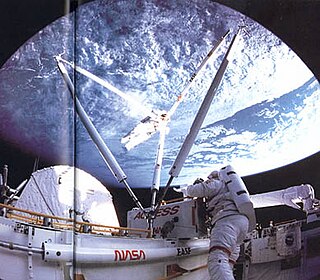
The Experimental Assembly of Structures in EVA and the Assembly Concept for Construction of Erectable Space Structures, or EASE/ACCESS, were a pair of space shuttle flight experiments that were performed on STS-61-B, on November 29 and December 1, 1985. The purpose of the experiments was to study how quickly astronauts would become proficient at assembling space structures during extravehicular activity, and how quickly they would become fatigued, and to explore various construction and maintenance techniques. In particular, researchers studied the applied moments of inertia arising in the manual assembly of a large space structure.

The Neutral Buoyancy Simulator was a neutral buoyancy pool located at NASA's George C. Marshall Space Flight Center (MSFC). Engineers and astronauts developed hardware and practiced procedures in this tank from its completion in 1968 through its decommissioning in 1997. Marshall recognized the need for underwater simulations of extra-vehicular activities (EVAs) and developed three successively larger tanks for the purpose. The Neutral Buoyancy Simulator contributed significantly to the American crewed space program. Skylab, the Space Shuttle, Hubble Space Telescope, and the International Space Station have all benefited from the Neutral Buoyancy Simulator. Until Johnson Space Center constructed the Weightless Environment Test Facility in the mid-1970s, MSFC had the only NASA-owned test facility that allowed engineers and astronauts to become familiar with the dynamics of body motion under weightless conditions.

Weightlessness is the complete or near-complete absence of the sensation of weight. It is also termed zero G-force or zero-G.

Neutral buoyancy simulation with astronauts immersed in a neutral buoyancy pool, in pressure suits, can help to prepare astronauts for the difficult task of working while outside a spacecraft in an apparently weightless environment.

Astronaut training describes the complex process of preparing astronauts in regions around the world for their space missions before, during and after the flight, which includes medical tests, physical training, extra-vehicular activity (EVA) training, procedure training, rehabilitation process, as well as training on experiments they will accomplish during their stay in space.

Skylab II was a space station concept proposed in 2013 by the Advanced Concepts Office of NASA Marshall Space Flight Center, to be located at the Earth-Moon L2 Lagrangian point. Proposed by NASA contractor Brand Griffin, Skylab II would have been constructed as a "wet workshop" using a spent upper-stage hydrogen fuel tank from the Space Launch System (SLS), much as the Skylab was originally planned to be built "wet" from the spent bipropellant tanks of the Saturn S-IVB upper stage. If constructed, Skylab II would have been the first crewed outpost located beyond the orbit of the Moon.
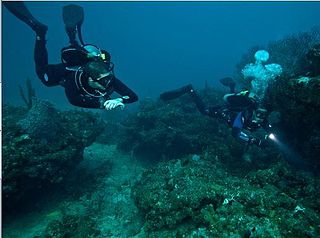
The trim of a diver is the orientation of the body in the water, determined by posture and the distribution of weight and volume along the body and equipment, as well as by any other forces acting on the diver. Both static trim and its stability affect the convenience and safety of the diver while under water and at the surface. Midwater trim is usually considered at approximately neutral buoyancy for a swimming scuba diver, and neutral buoyancy is necessary for efficient maneuvering at constant depth, but surface trim may be at significant positive buoyancy to keep the head above water.

Scuba skills are skills required to dive safely using self-contained underwater breathing apparatus. Most of these skills are relevant to both open-circuit scuba and rebreather scuba, and many are also relevant to surface-supplied diving. Certain scuba skills, which are critical to divers' safety, may require more practice than is provided during standard recreational training.

The Valsalva device is a device used in spacesuits, some full face diving masks and diving helmets to allow astronauts and commercial divers to equalize the pressure in their ears by performing the Valsalva maneuver inside the suit without using their hands to block their nose. Astronaut Drew Feustel has described it as "a spongy device called a Valsalva that is typically used to block the nose in case a pressure readjustment is needed."
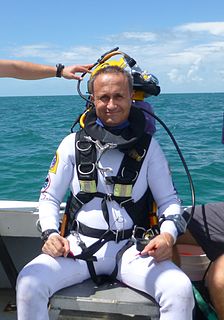
Hervé Stevenin is a European aquanaut leading ESA Neutral Buoyancy Facility Operations and the EVA Training Unit at the European Astronaut Centre (EAC) in Cologne, Germany. He served as an aquanaut on the NASA Extreme Environment Mission Operations 19 crew.
Blue Abyss is a research pool planned for construction in Cornwall, England, United Kingdom. It will be 50 metres (160 ft) deep with volume of approximately 42,000 cubic metres (1,500,000 cu ft), making it the world's second deepest pool after the Deep Dive Dubai.
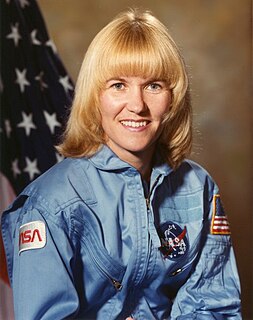
Mary Helen Johnston, later also Mary Helen McCay, is an American scientist and former astronaut. Working with NASA as an engineer in the 1960s and '70s, Johnston aspired to be an astronaut; she unsuccessfully applied in 1980 before becoming a payload specialist in 1983. Johnston retired from NASA in 1986 without having gone to space. She is a professor at Florida Institute of Technology.





















